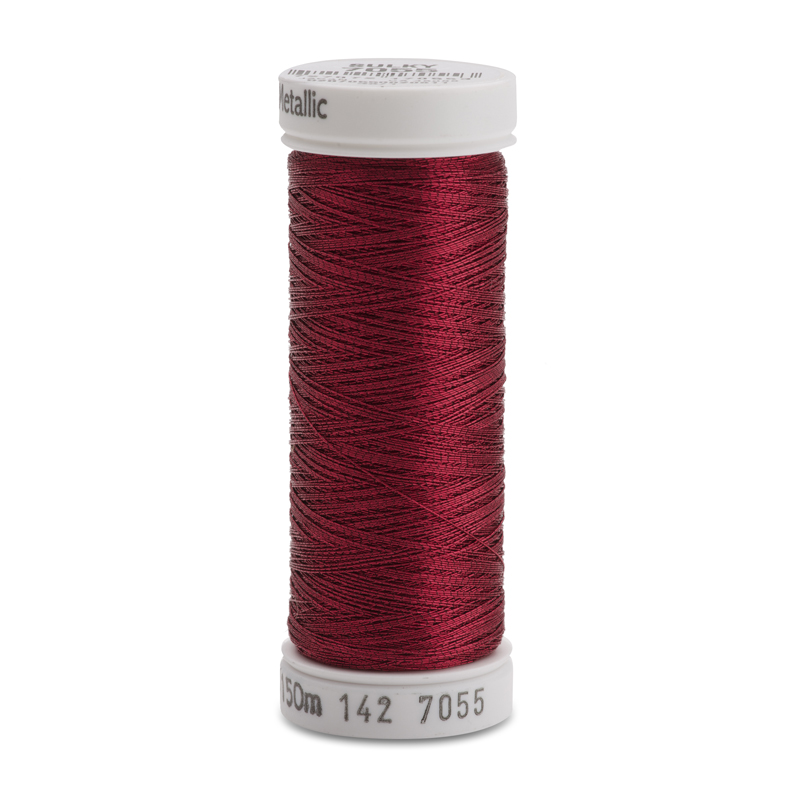Answer
Jan 31, 2022 - 08:16 AM
You can send any pictures to info@sulky.com. We'd LOVE to see them.
Yes, you can use a metallic for satin stitching with a few adjustments:
1. Lower your top tension 1 or 2 numbers (for the flat metallics like Sliver or Holoshimmer), lower more.
2. Use a 90/14 Topstitch needle or 90/14 Metallic needle (not an 80/12).
3. Position the thread so that it does not twist as it comes off the spool.
4. Slow your speed down.
5. You may need to elongate the satin stitch some.
6. For free motion - all the above applies, plus be sure to use a spring loaded free-motion foot.
7. Should you have any breakage, sometimes a thread/needle lubricant like Sewer's Aid helps a lot (on both the needle and the thread).
All machine decorative stitches are digitized for 40 wt. thread. Metallics are considered to be a 30 wt. thread, so that's about 1/3 heavier. So some minor adjustments to the design may be necessary - like elongating the satin stitch some. Test first. Contact me at info@sulky.com if you have any further questions about this.
Yes, you can use a metallic for satin stitching with a few adjustments:
1. Lower your top tension 1 or 2 numbers (for the flat metallics like Sliver or Holoshimmer), lower more.
2. Use a 90/14 Topstitch needle or 90/14 Metallic needle (not an 80/12).
3. Position the thread so that it does not twist as it comes off the spool.
4. Slow your speed down.
5. You may need to elongate the satin stitch some.
6. For free motion - all the above applies, plus be sure to use a spring loaded free-motion foot.
7. Should you have any breakage, sometimes a thread/needle lubricant like Sewer's Aid helps a lot (on both the needle and the thread).
All machine decorative stitches are digitized for 40 wt. thread. Metallics are considered to be a 30 wt. thread, so that's about 1/3 heavier. So some minor adjustments to the design may be necessary - like elongating the satin stitch some. Test first. Contact me at info@sulky.com if you have any further questions about this.





Add New Comment